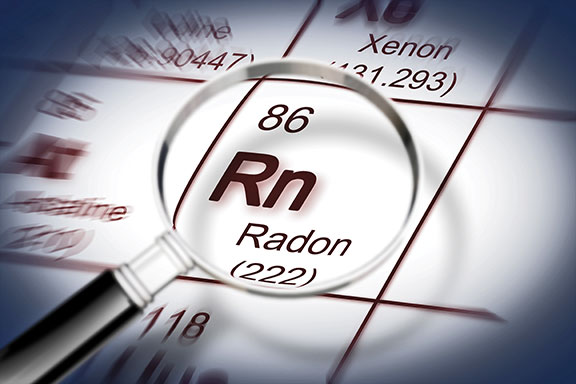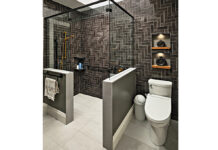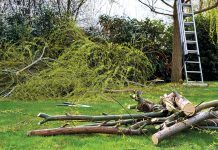By Frank Lohmann
Director, Building Science, CHBA
Canadian renovators are experts in applying the “house-as-a-system” concept, and CHBA’s newly published Renovators’ Manual embraces this concept and integrates it into all aspects of home renovations. Understanding the house-as-a-system is increasingly critical for renovators, since the national codes will require minimum levels of energy efficiency for existing buildings in 2025. And in the short term, many homeowners, who want to make the best use of their renovation budgets, are voluntarily looking to incorporate an energy retrofit into their major renovations.
The danger of radon
Radon is a radioactive gas that comes from the breakdown of uranium in soil and rock. What makes dealing with radon so difficult is that we can’t see, taste or smell radon. When radon is released from the ground into the outdoor air, it is diluted and is not a concern. However, in enclosed spaces, such as homes, it can accumulate to high levels through cracks and unintentional openings in basement floors and walls. Health Canada estimates that radon is the number one cause of lung cancer in non-smokers.
The importance of the house-as-a-system, especially in how energy-efficiency upgrades may affect the indoor radon concentration in a home, cannot be overstated. The “stack effect” or “chimney effect” can suck radon right out of the soil into the home, which can be considerably worse in older homes with large, unsealed cracks in slabs and foundation walls and wall-floor joints and pipe and wiring penetrations.
The easiest way for the homeowner and the renovator to find out whether the home has a radon problem is testing. Because radon levels vary by day, by weather and from house to house, Health Canada recommends a long-term (three-month) test during the fall-winter months when windows are closed. The best time to test homes for radon is the heating season, but radon tests may also be useful at the beginning of a renovation project – regardless of the season.
Homeowners can buy long-term test kits online at takeactiononradon.ca which they can then send to a lab for analysis, or they can buy a certified radon detector/monitor device to see for themselves. The Canadian National Radon Proficiency Program (C-NRPP) maintains a list of certified testing devices here: c-nrpp.ca/approved-radon-measurement-devices. The same website also offers contact information for Certified Radon Measurement Professionals.
Health Canada recommends taking remedial action when a long-term test indicates that the annual average concentration in the home would be above 200 becquerels per cubic metre (Bq/m³). C-NRPP also offers a listing of certified measurement and mitigation professionals at c-nrpp.ca/find-a-professional who can collaborate with renovators to determine the radon levels and, if necessary, design and install a mitigation system.
Addressing radon in renovations
While a well-sealed air barrier and a balanced and maintained ventilation system can help minimize the entry of radon, even the best building science cannot control radon in areas in Canada where radon concentrations in the soil are very high. Essentially, the relationship between pressure differential, airtightness and indoor radon level means that any renovation work influencing exhausts, airtightness, mechanical ventilation and natural air leakage can increase the risk of radon in a home, for example, when upgrading and air sealing windows or installing a new kitchen range hood with a large exhaust capacity.
The good news is that the solutions recommended by Health Canada are generally straightforward: A subfloor depressurization system that connects the space underneath the basement floor with a pipe to the roof or sidewall (passive stack) and – where the passive flow through the pipe is not sufficient to reduce the radon concentration – an inline fan would be installed on the pipe (active stack) to depressurize the sub-slab space continuously to reverse the flow of radon and exhaust it to the outside. In some homes, even active mitigation can be challenging; in these cases, it is likely best that renovators engage certified professionals to conduct radon work, whether testing or remediation.












